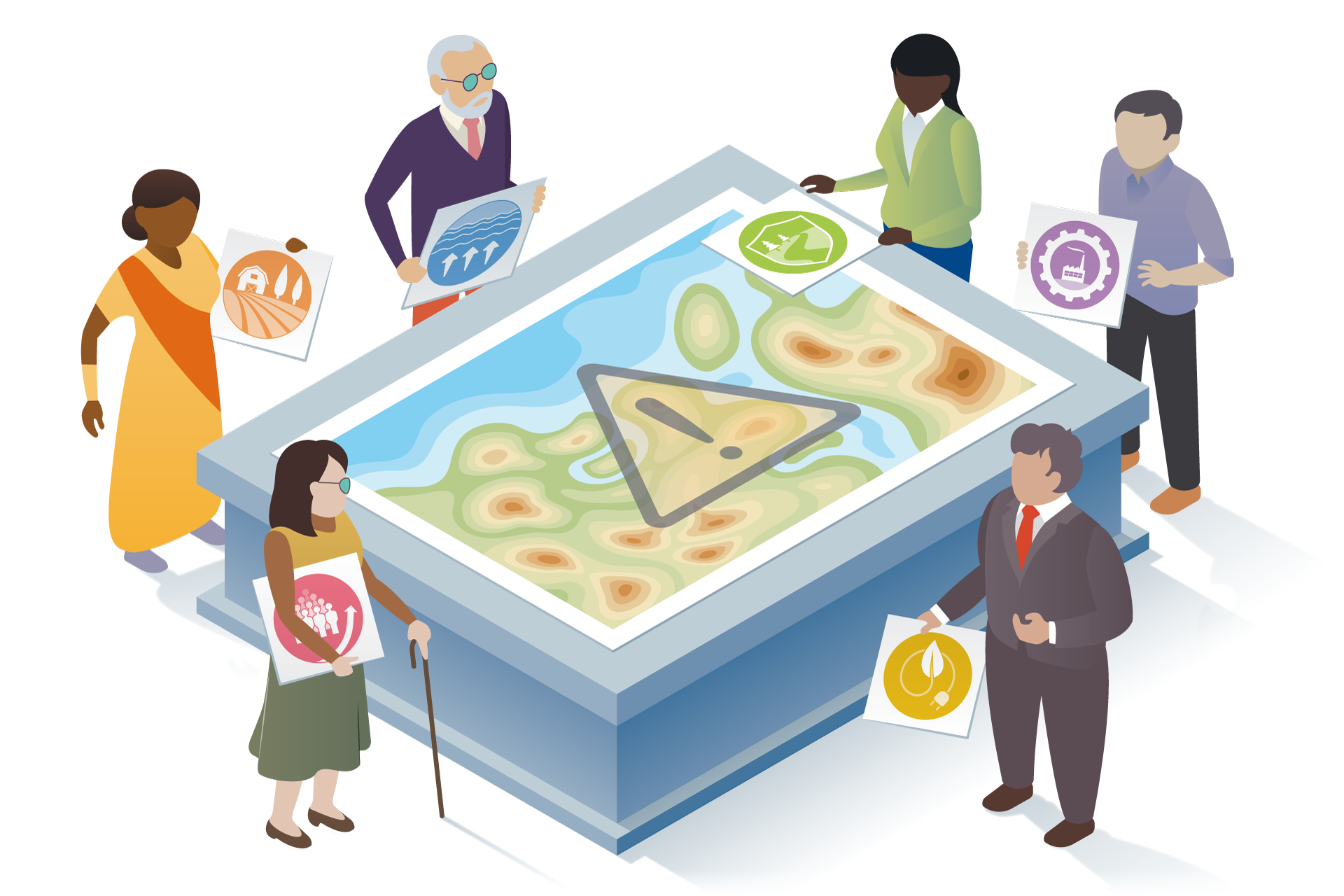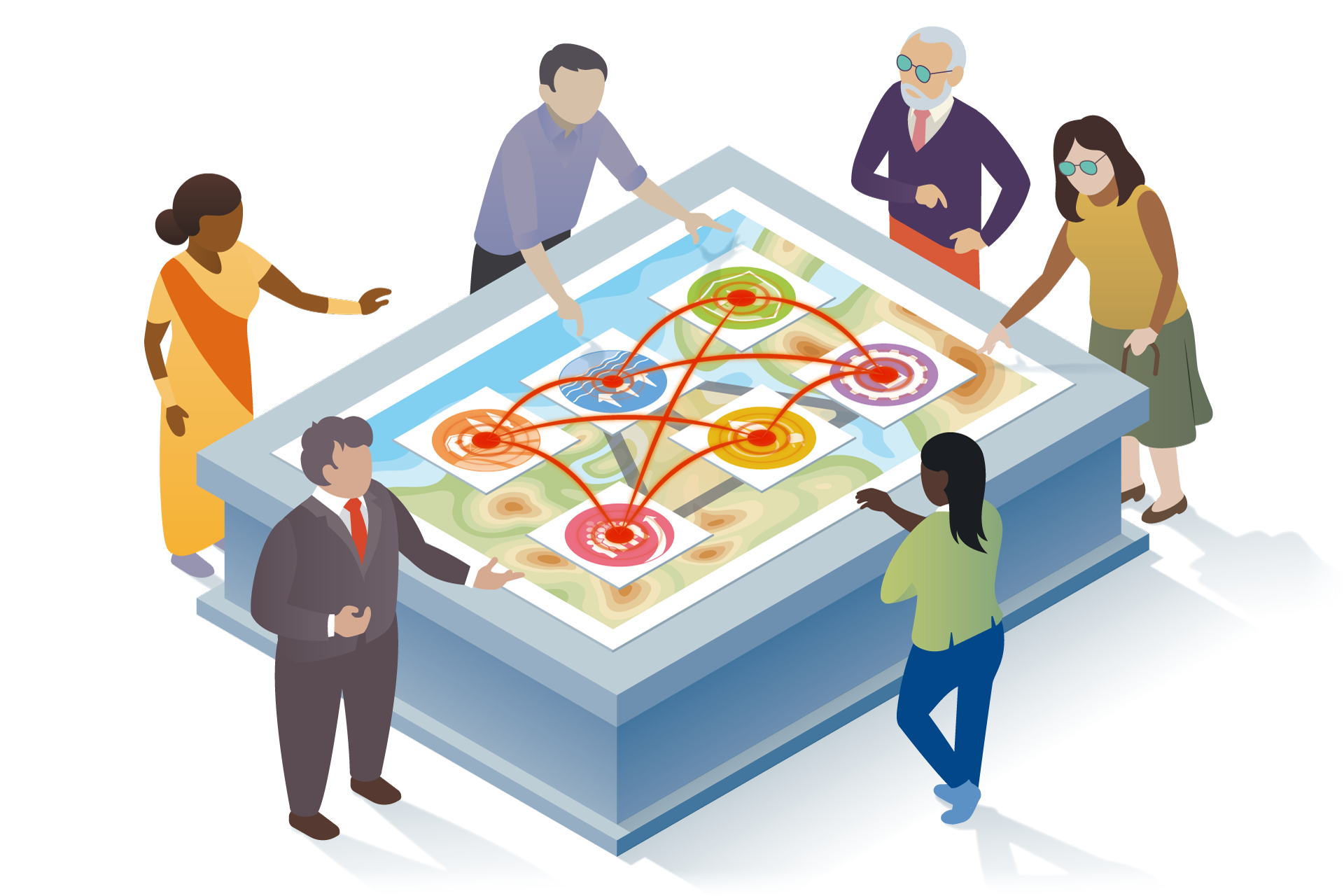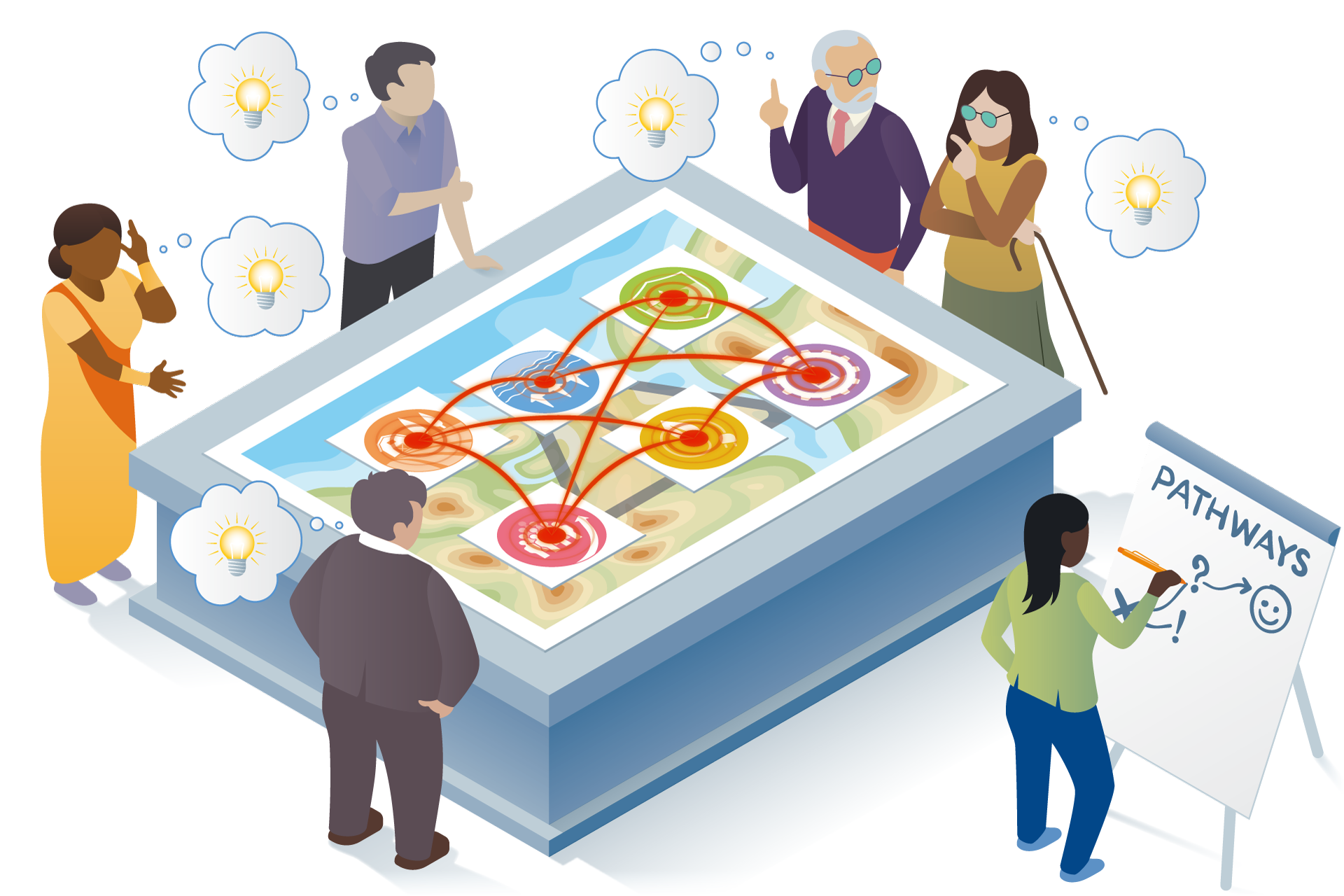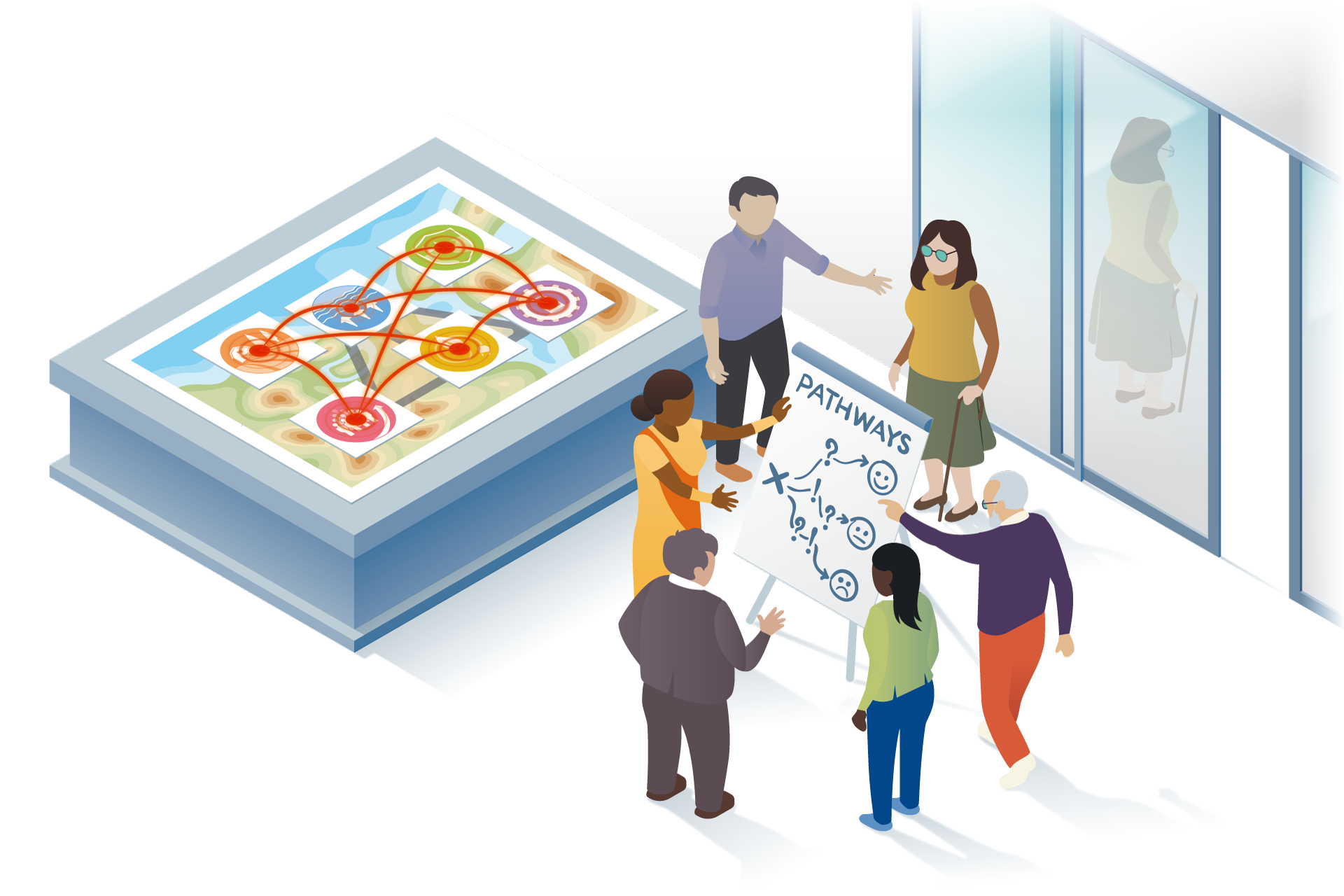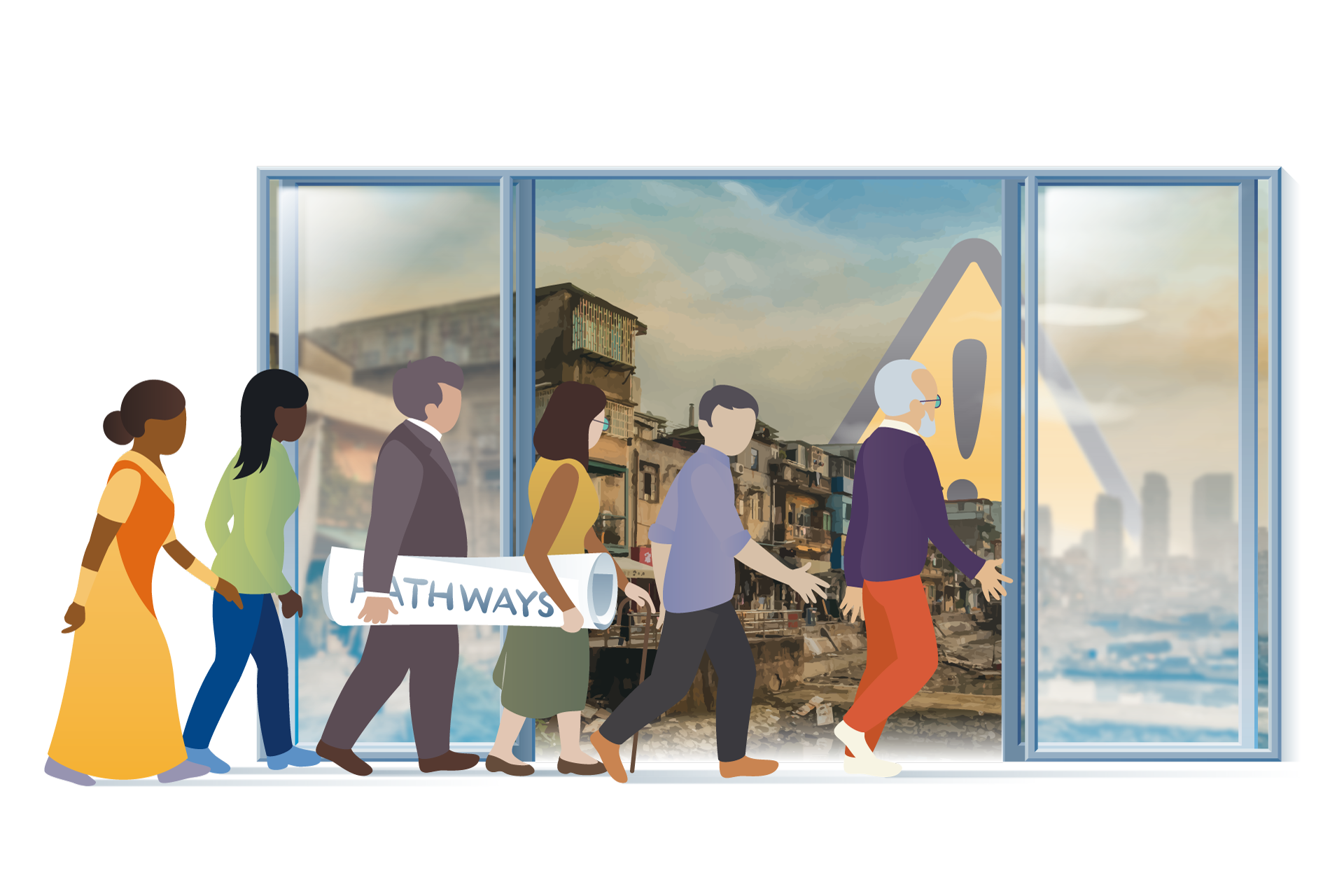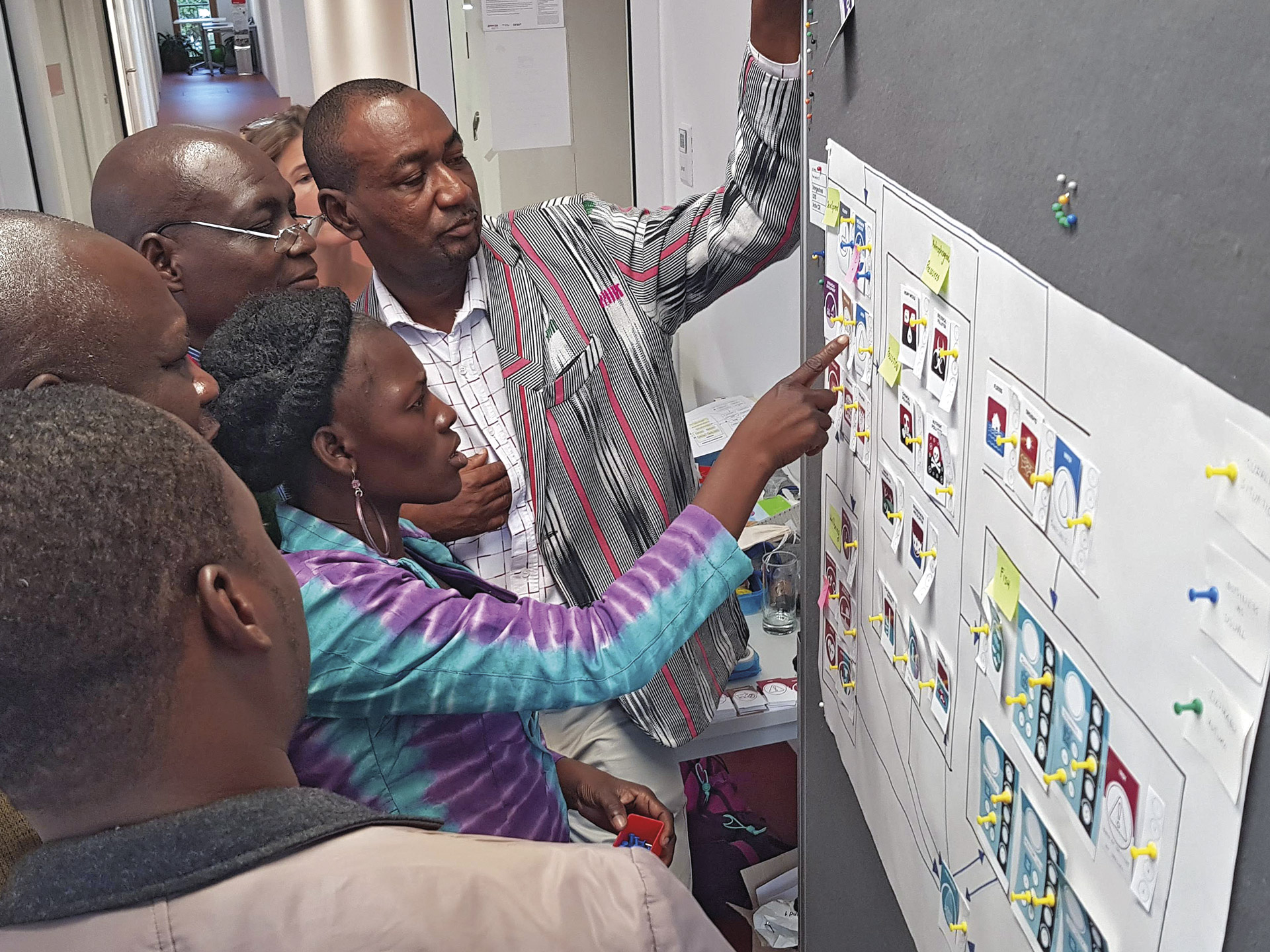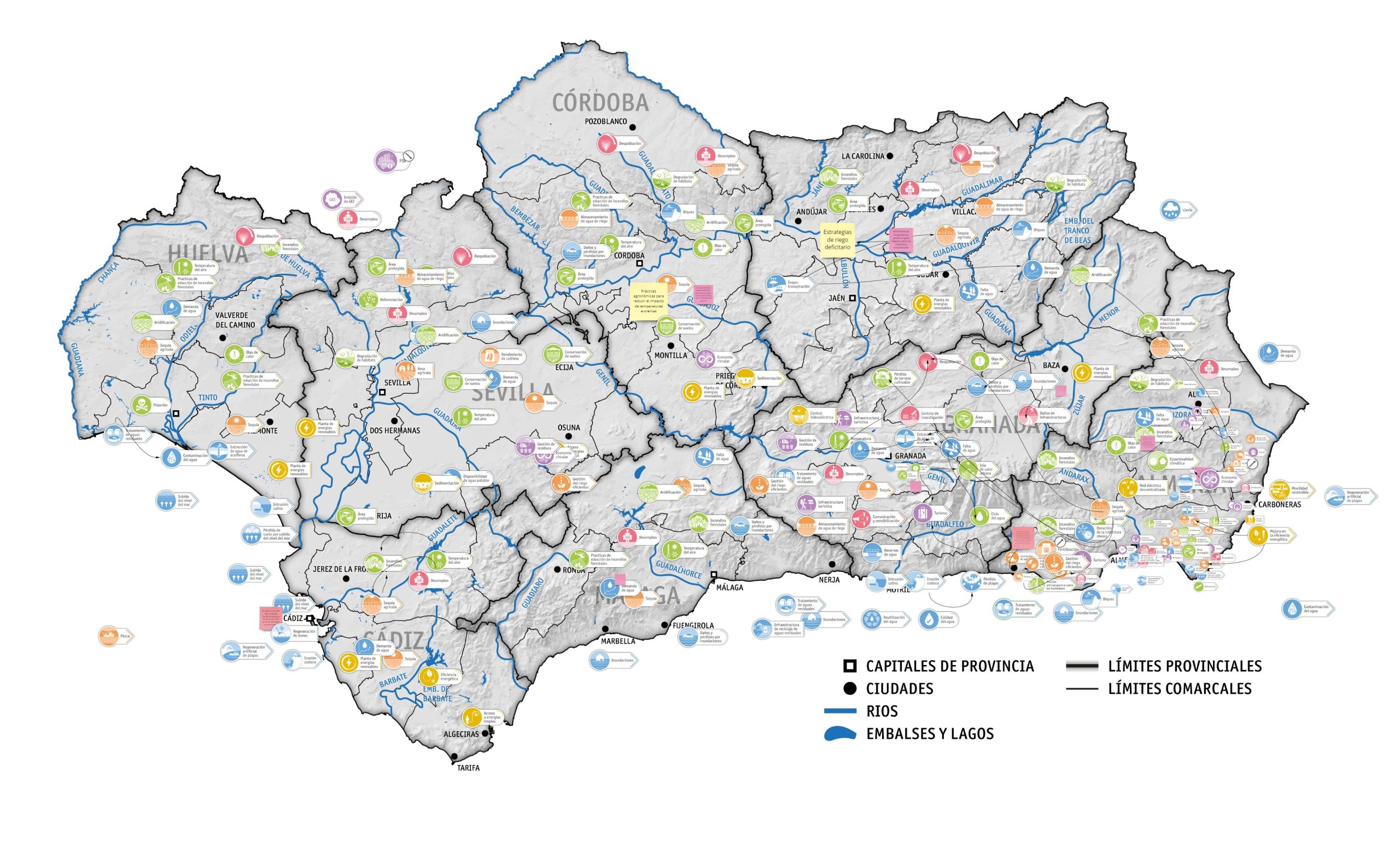Anticipatory Systems Mapping
is a participatory, interactive, and visual approach to systems mapping through which stakeholders, related by a common issue, co-design sustainability pathways.
What is Anticipatory Systems Mapping?
In the Anticipatory Systems Mapping (or ASM), stakeholders first create a mutual understanding of the current state of the system in question, which also forms the basis of a business-as-usual scenario. They then devise visions of their desired futures and collectively explore possible strategies, also known as pathways, to reach them. Strategies can be tested against a range of external scenarios and drivers. This process allows these participants to deepen their understanding of the system, and identify barriers and levers on the path to their desired futures.
Three domains of Anticipatory Systems Mapping
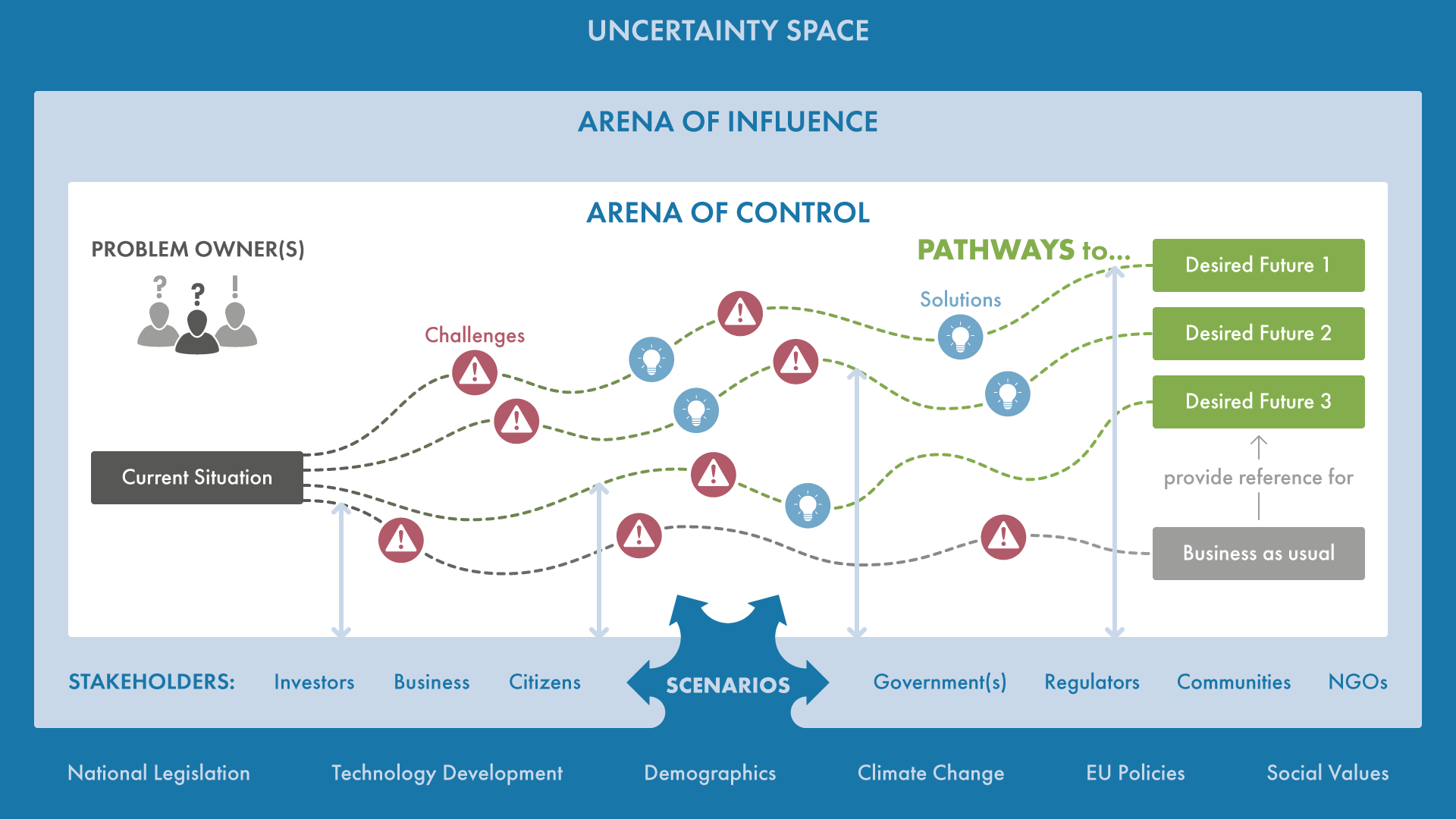
Benefits
Process steps
The general process of the Anticipatory Systems Mapping approach is shown more closely below. Although it is presented in sequential order, the process is not entirely linear – the steps are fluid and will overlap with each other during the process.
COLLABORATIVE SYSTEMS MAPPING
OF SUSTAINABLE PATHWAYS (CoSMoS)
Under the umbrella of the ASM approach, we continue to develop different methods to address various kinds of systems. Collaborative Systems Mapping of Sustainable Pathways, or CoSMoS, is an example of an ASM method which is in the most developed phase and thus widely used (see examples below).
CoSMoS looks at sustainability pathways for social-ecological systems. In its base form, CoSMoS comes with general categorisations of the water-energy-land nexus system elements – i.e. related to water, food, energy, economy, society and the environment. It can thus be used in broad contexts. However, these categorisations and subsequent system elements can be co-designed and customised for specific themes and applications. Moreover, because of the participatory nature of CoSMoS, and ASM in general, these system elements and even the categories may be improved during the workshops themselves.
Case studies portfolio
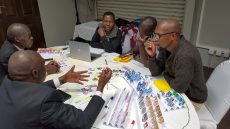
Water-Energy-Land Nexus in the Zambezi River Basin
CoSMoS for the Zambezi Basin was also carried out as part of the ISWEL project led by IIASA. This workshop aimed to co-develop different visions and pathways while taking into account different global development and climate trends and enhancing the shared understanding of the implications of different investments in the Zambezi basin – especially concerning […]
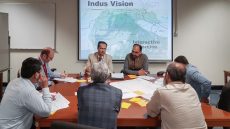
Water-Energy-Land Nexus in the Indus River Basin
The CoSMoS method applied in a workshop setting was used for the Indus River Basin and was part of the Integrated Solutions for Water, Energy, and Land (ISWEL) project led by the International Institute for Applied Systems Analysis (IIASA) in partnership with the United Nations Industrial Development Organisation (UNIDO) and the Global Environment Facility (GEF). […]
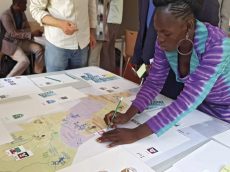
Fisheries Management in the Nakambe Basin, Burkina Faso
The CoSMoS method applied in a workshop setting was used for the Indus River Basin and was part of the Integrated Solutions for Water, Energy, and Land (ISWEL) project led by the International Institute for Applied Systems Analysis (IIASA) in partnership with the United Nations Industrial Development Organisation (UNIDO) and the Global Environment Facility (GEF). […]
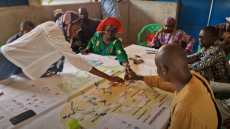
Implementing SDGs at the local level, Fimela Region, Senegal
The CoSMoS method applied in a workshop setting was used for the Indus River Basin and was part of the Integrated Solutions for Water, Energy, and Land (ISWEL) project led by the International Institute for Applied Systems Analysis (IIASA) in partnership with the United Nations Industrial Development Organisation (UNIDO) and the Global Environment Facility (GEF). […]
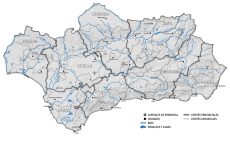
Resilience Building in Andalusia Region, Spain
The ASM process was also used in the context of the EIT Climate-KIC Deep Demonstration “Forging Resilience Regions” project – an initiative aimed at supporting European regions in their transformation to net-zero emissions and climate-resilient future. A workshop based on a combination of CoSMoS and elements of policy simulations (another one of our tools) was […]

